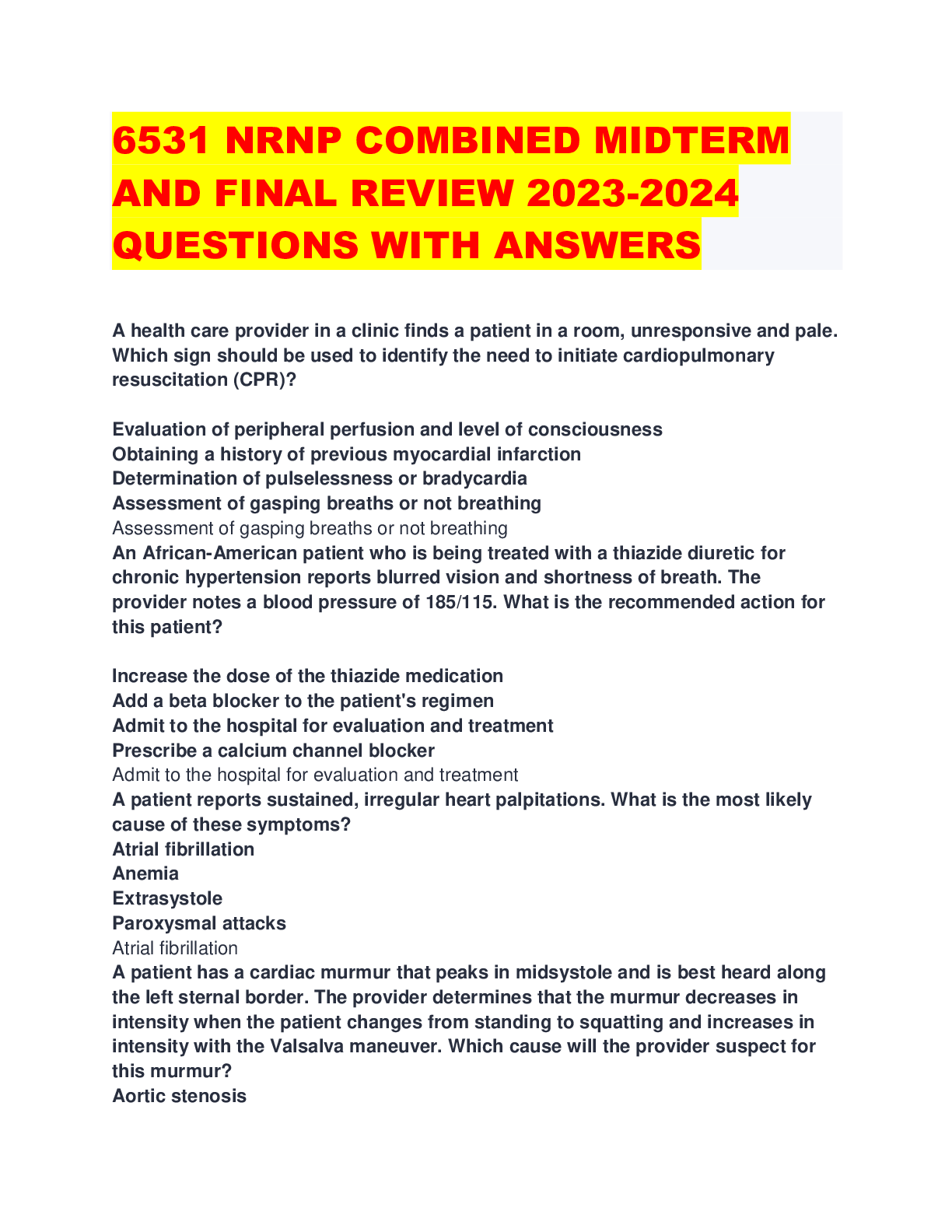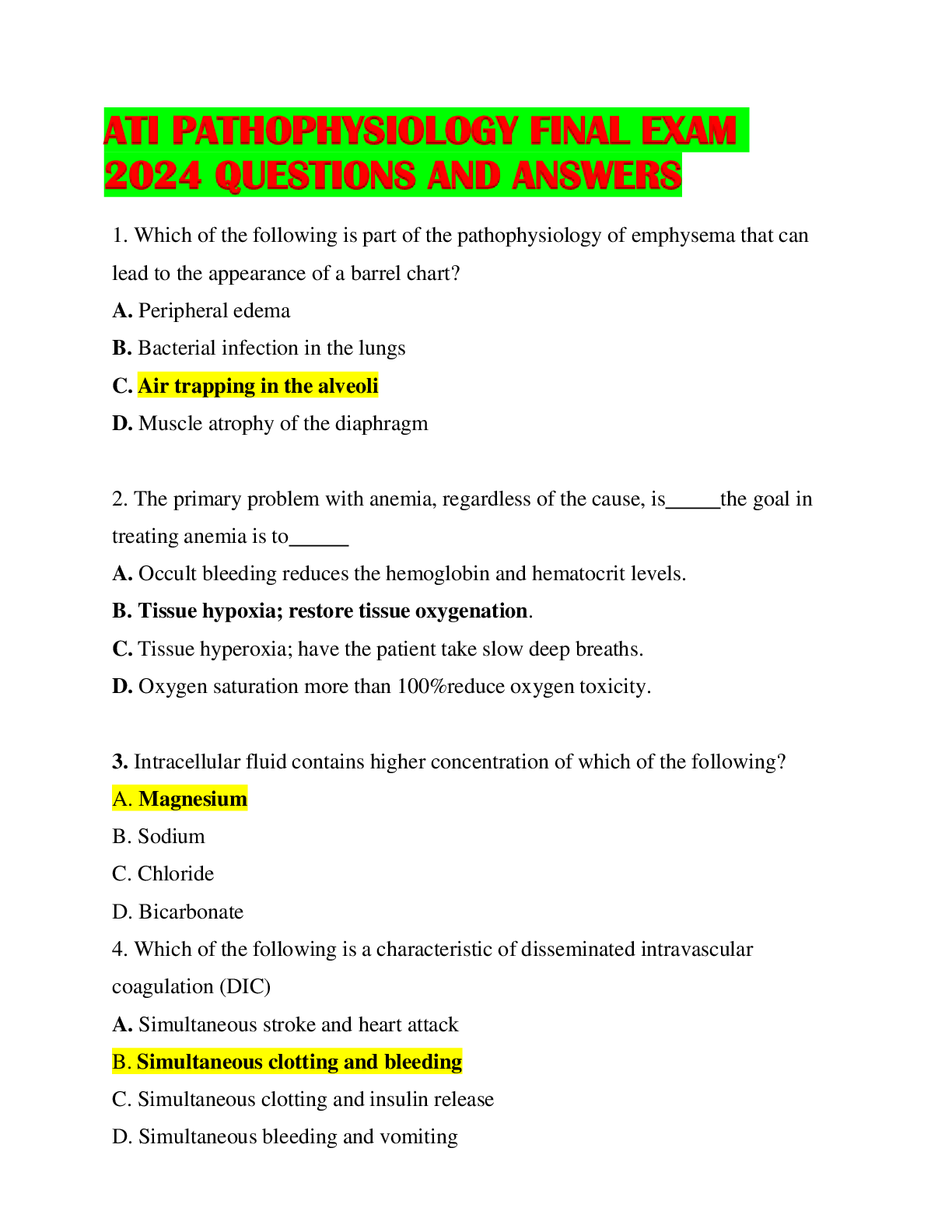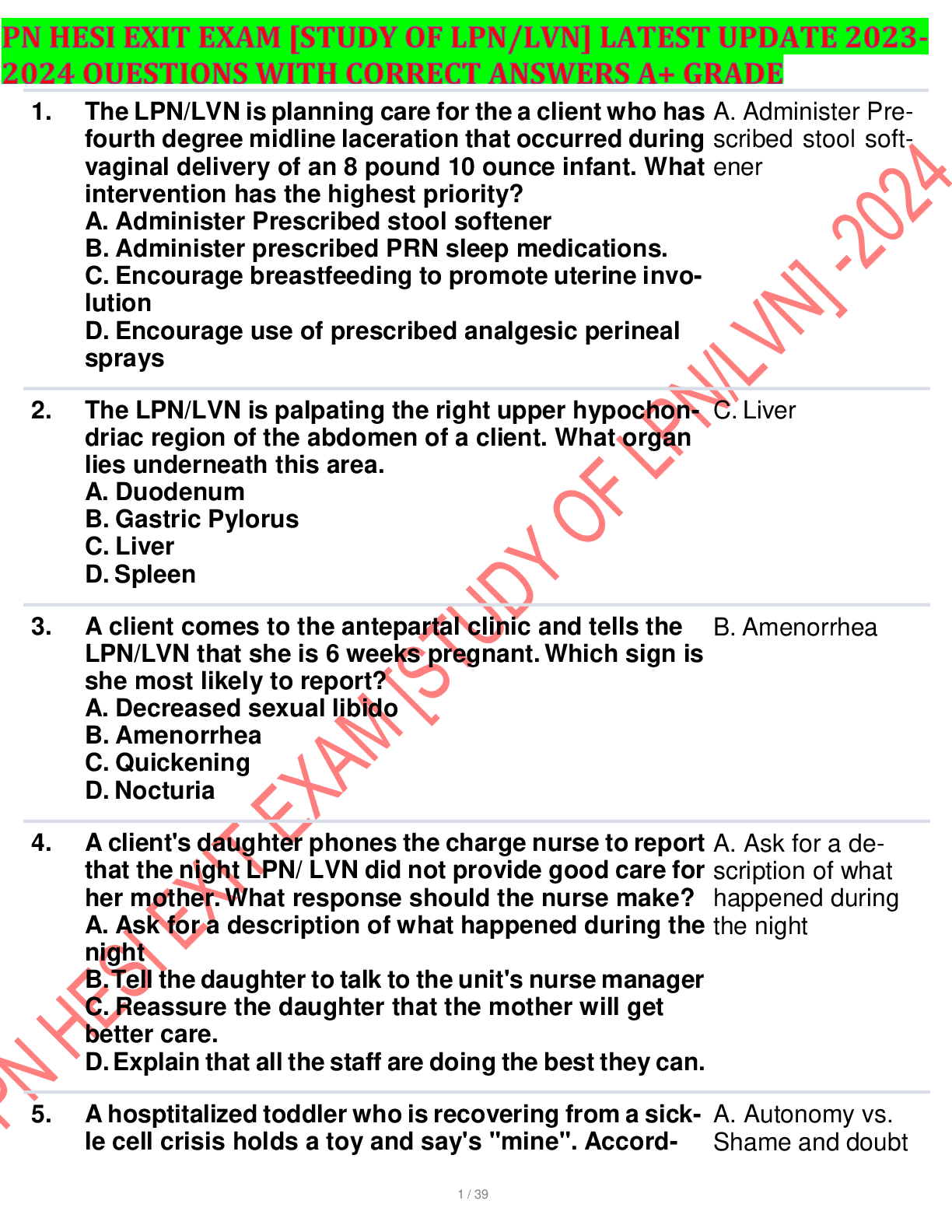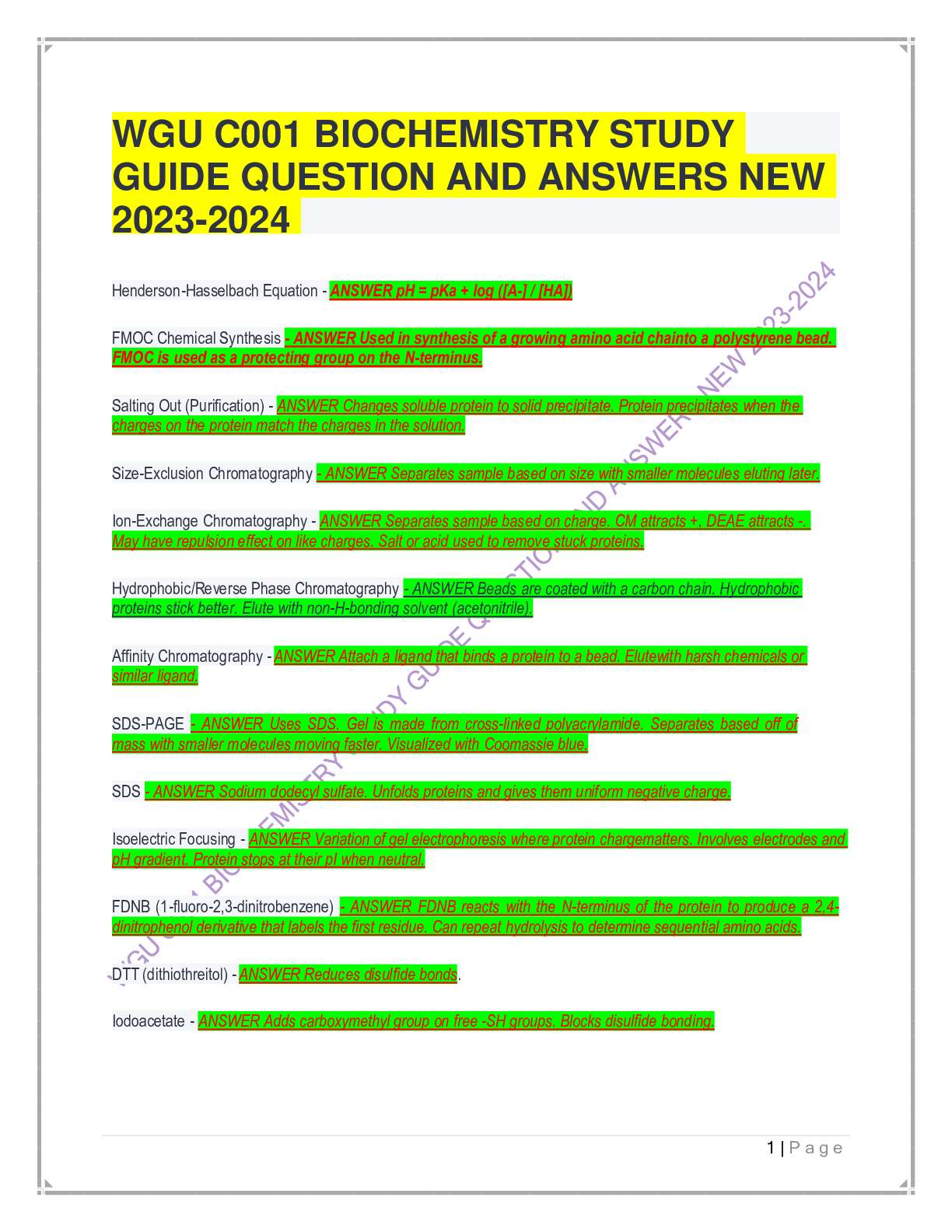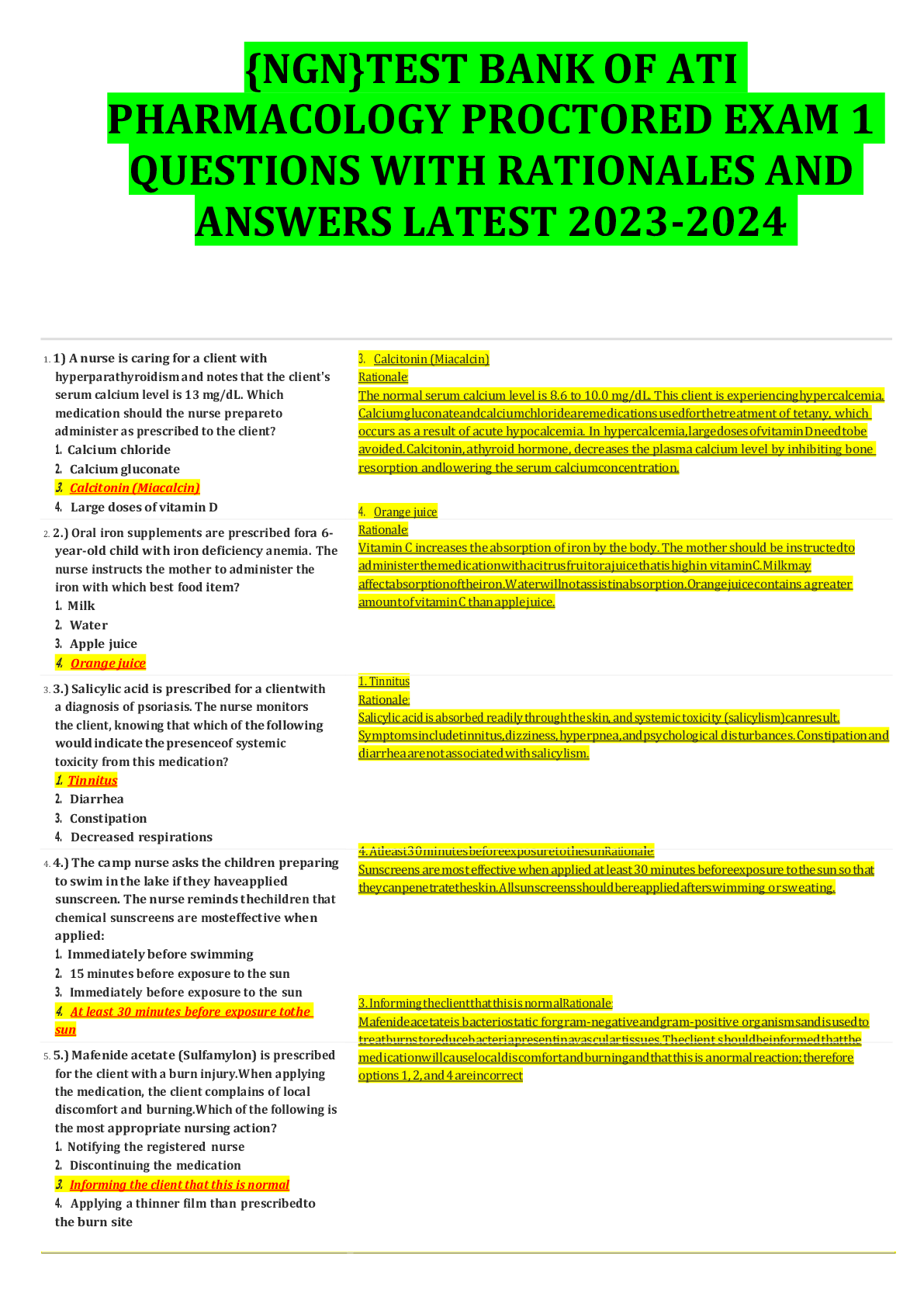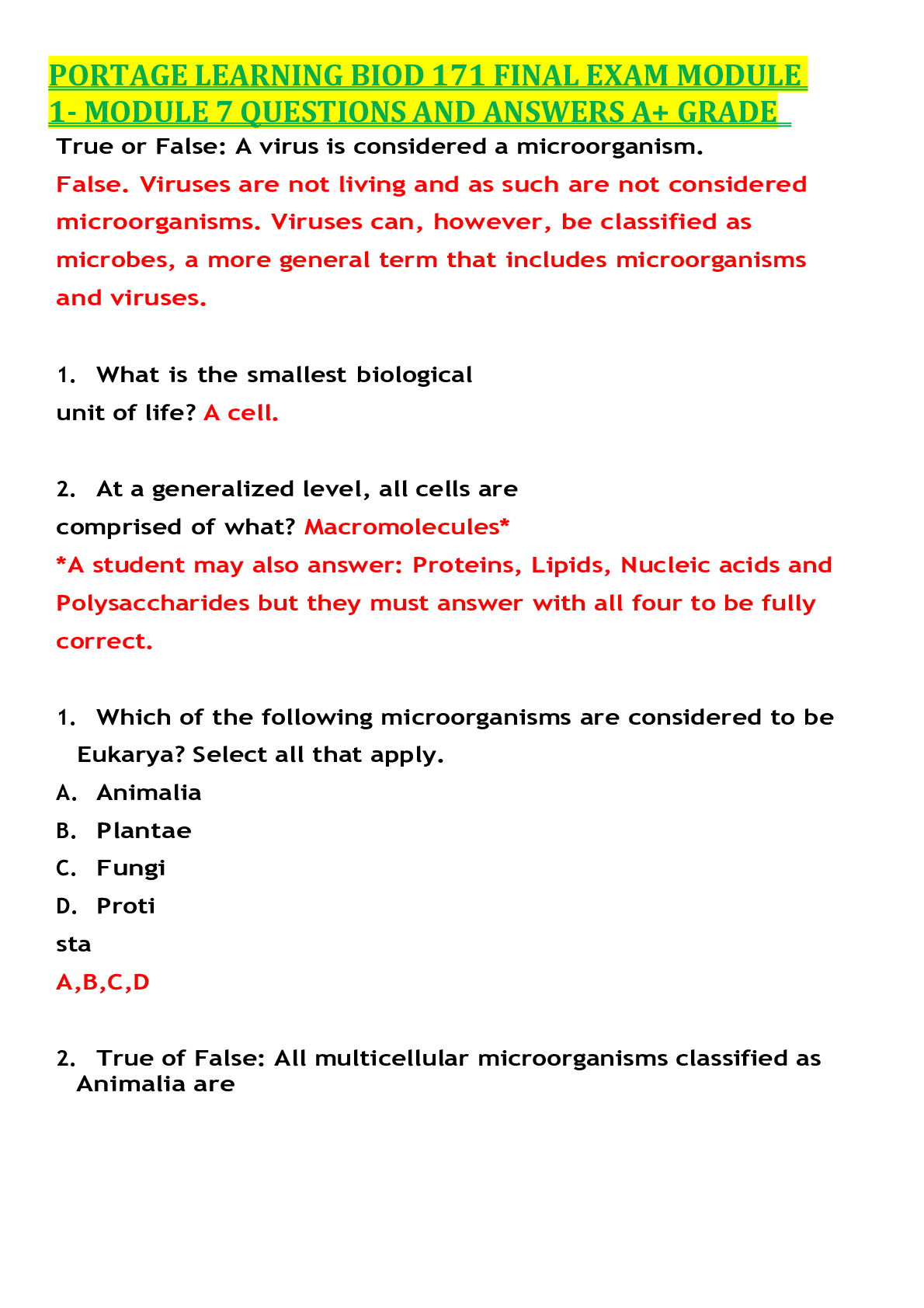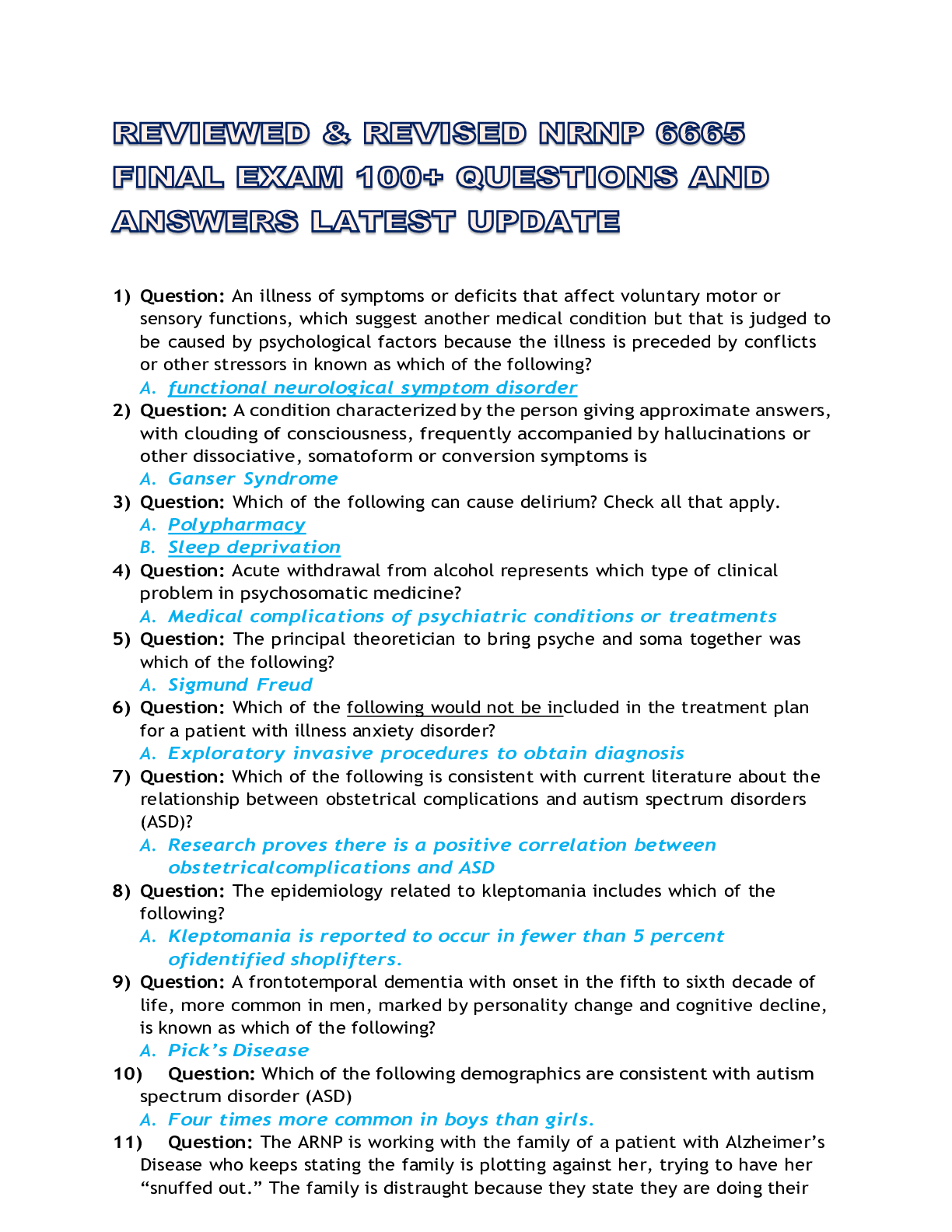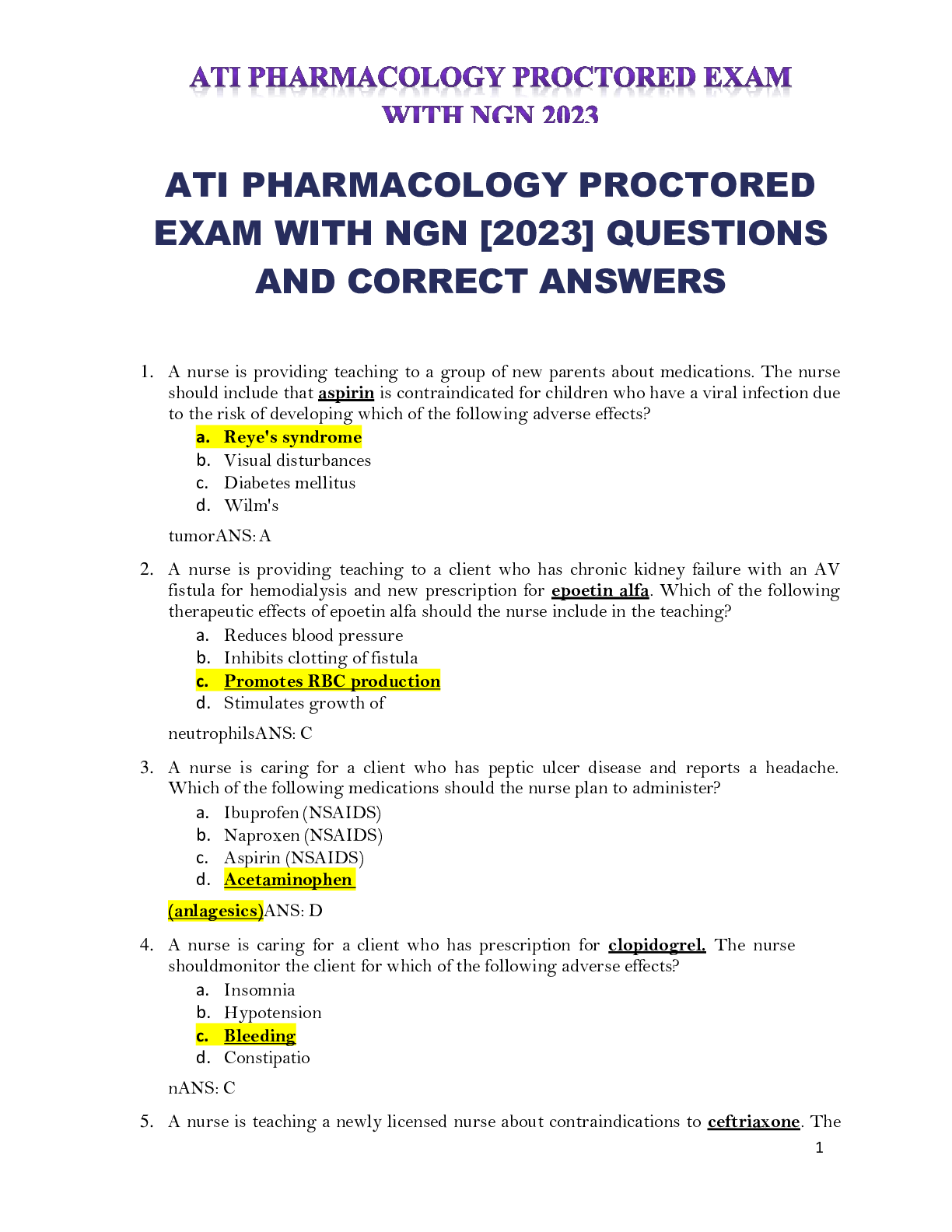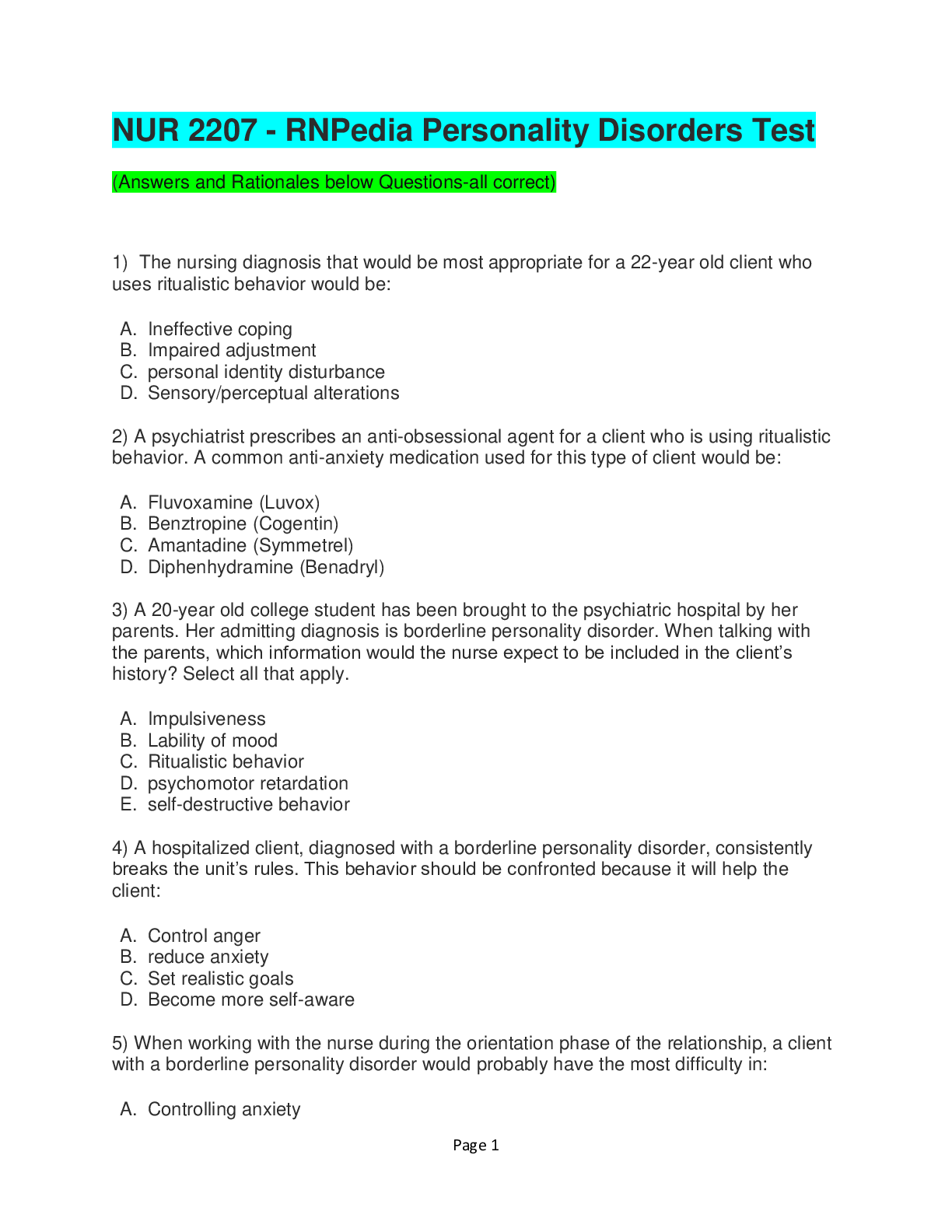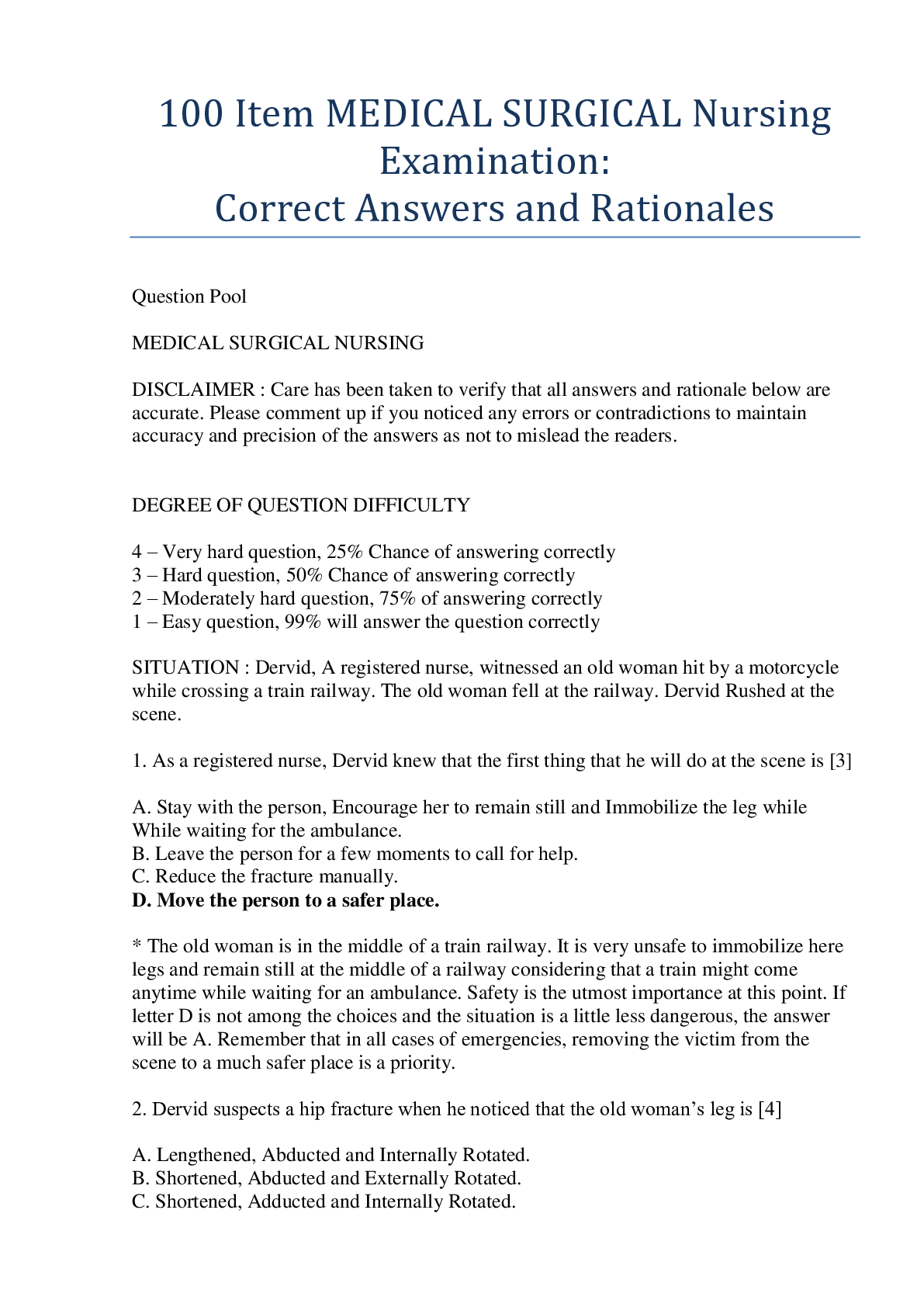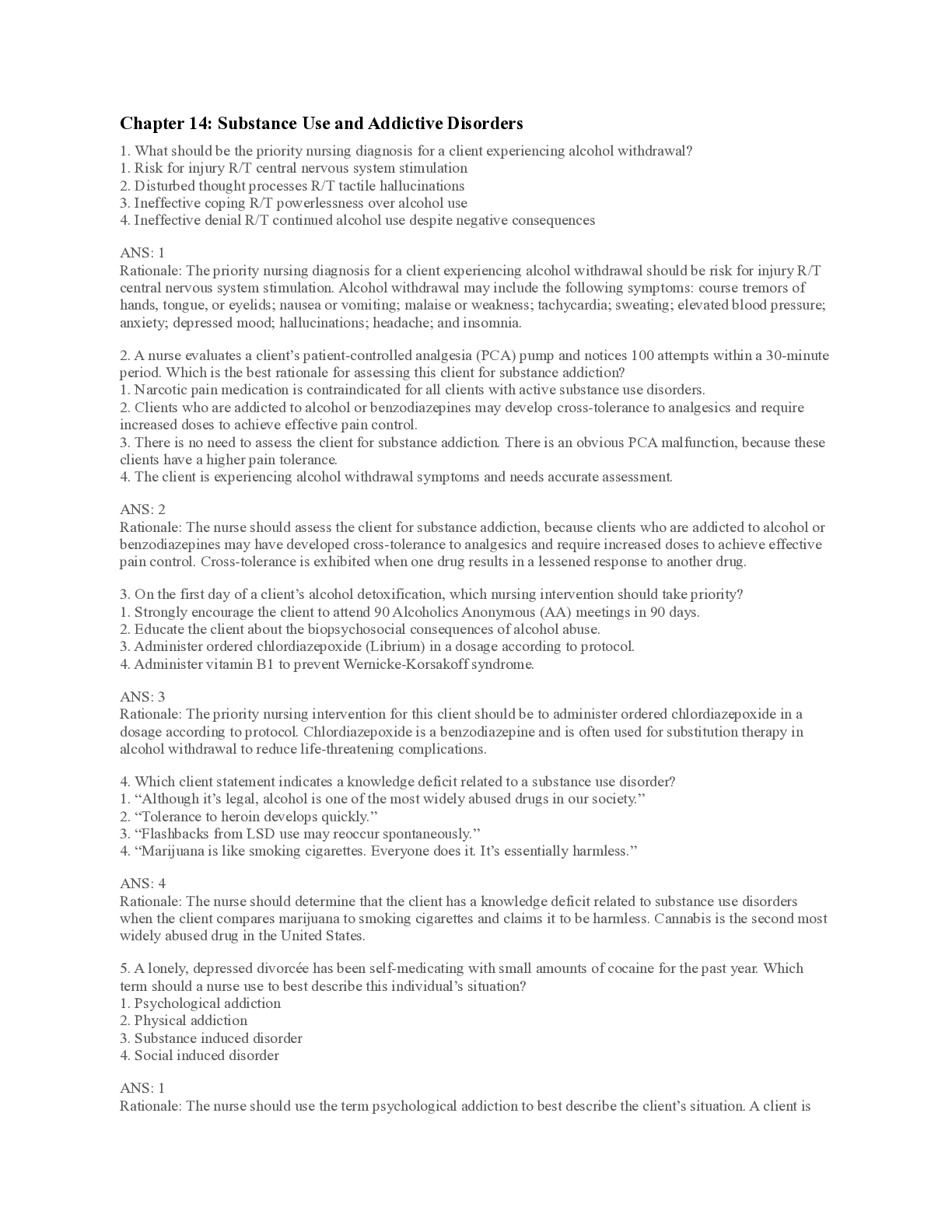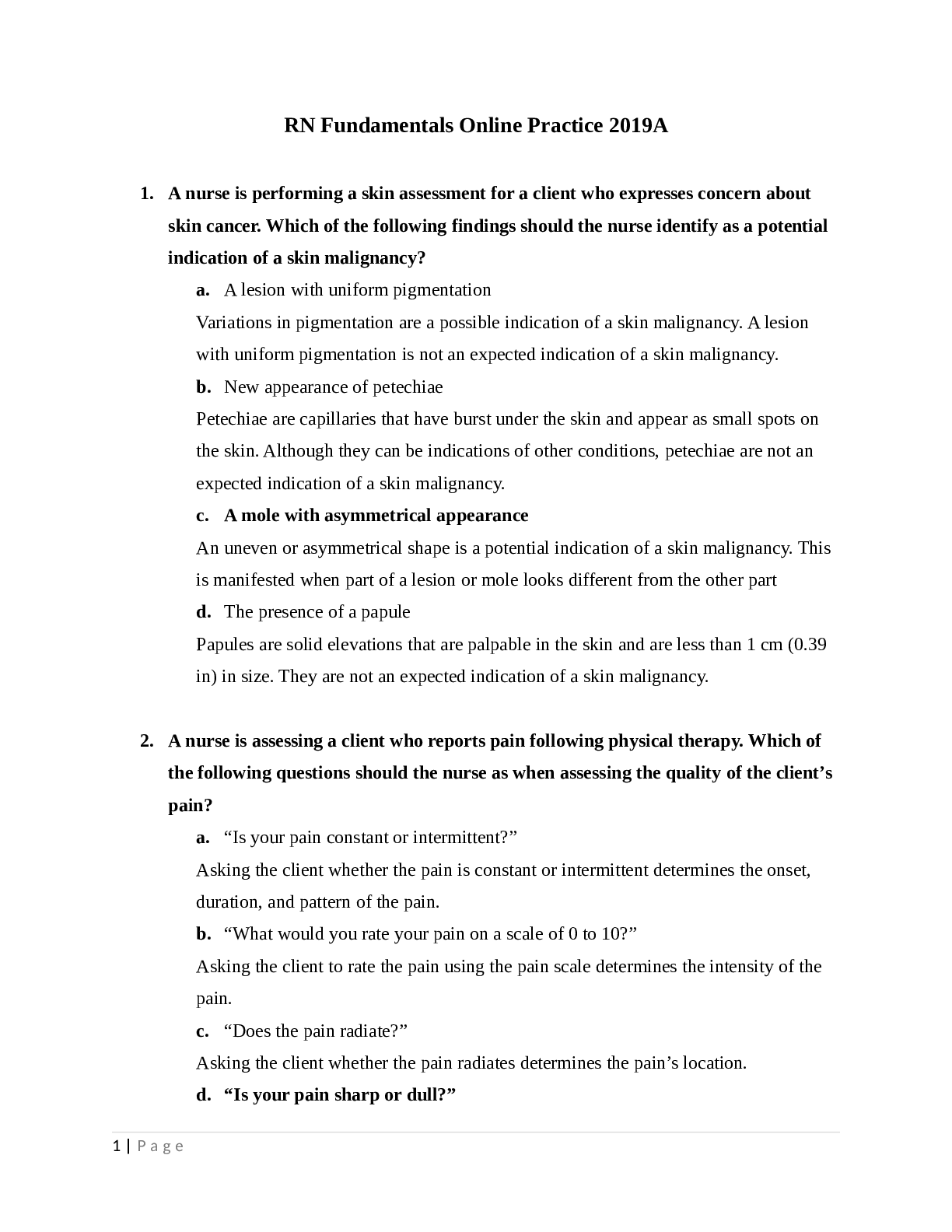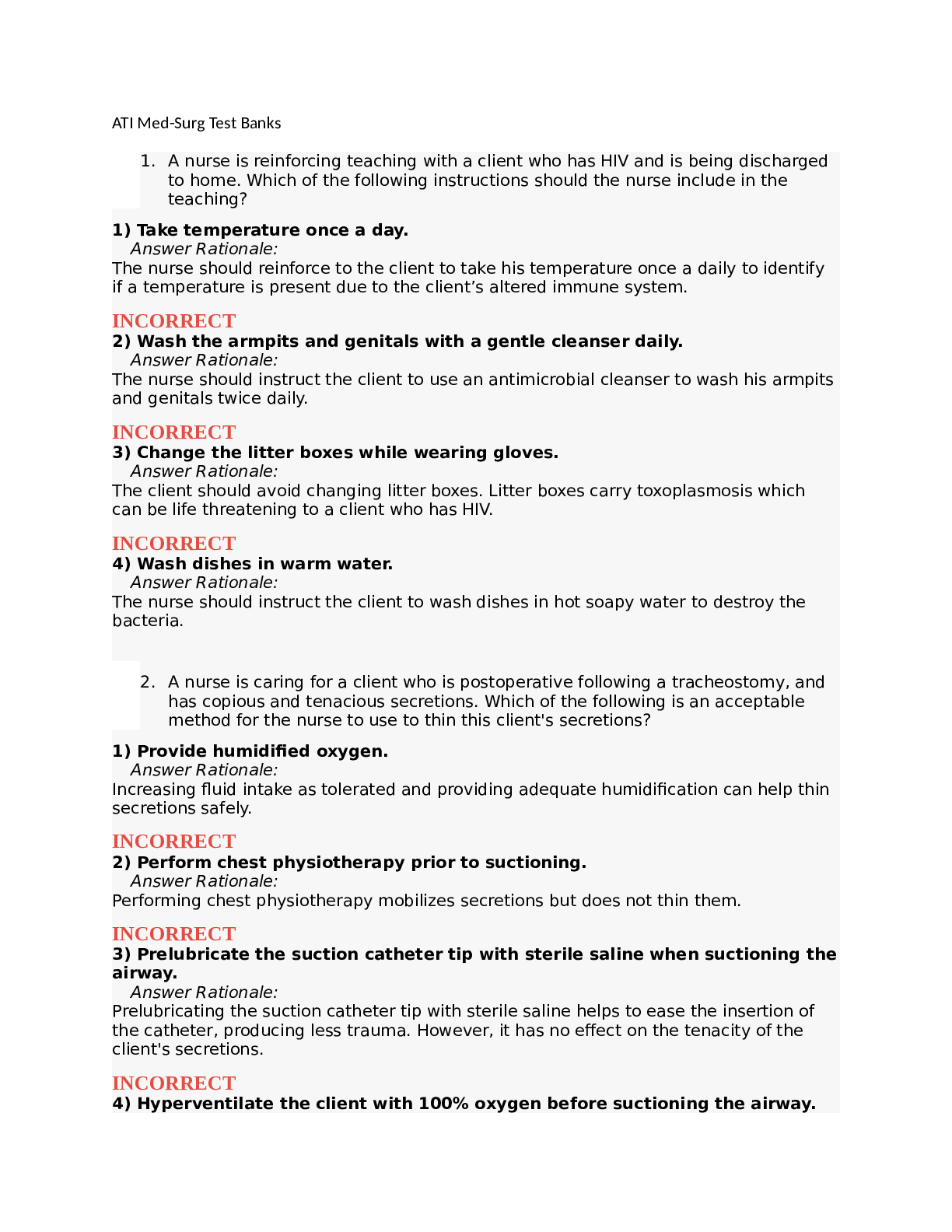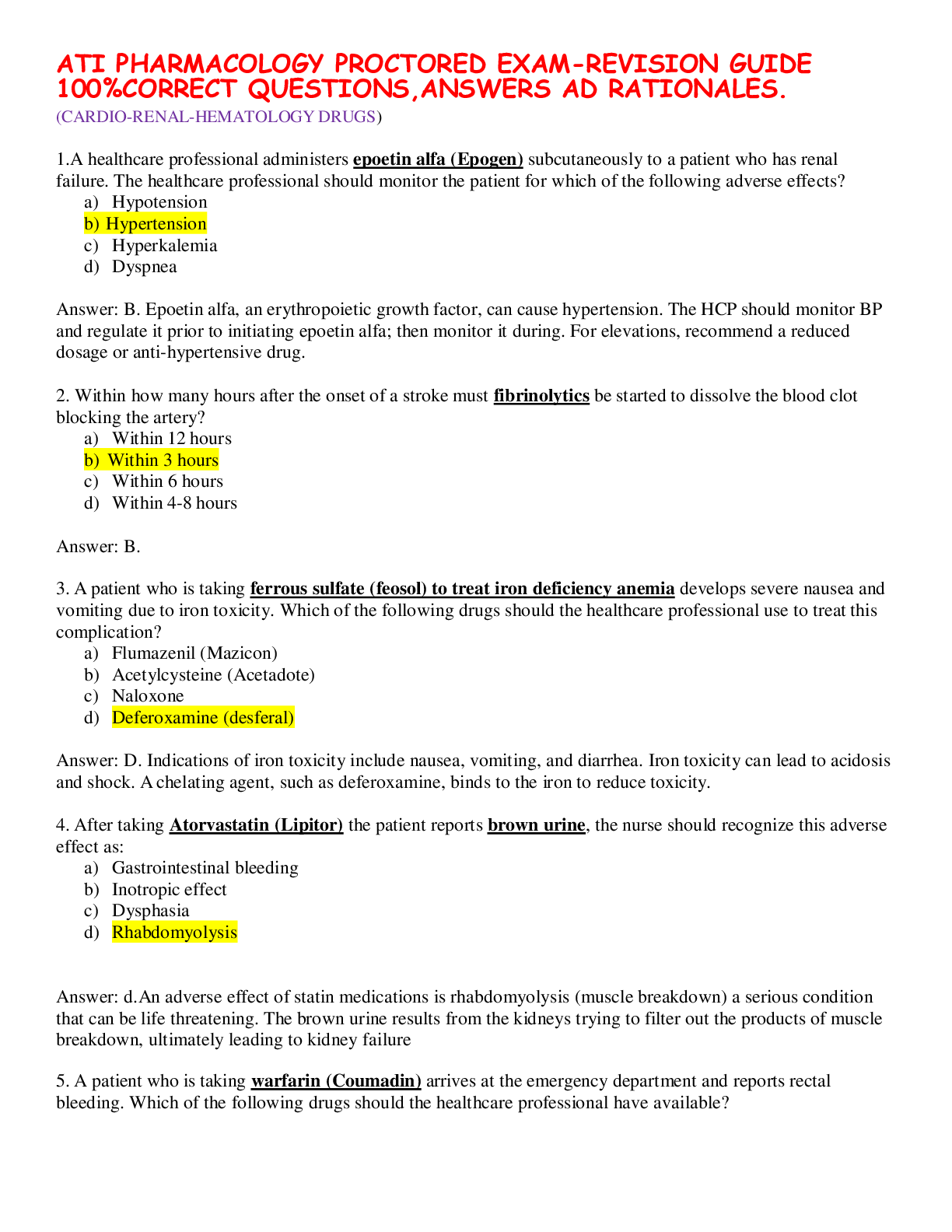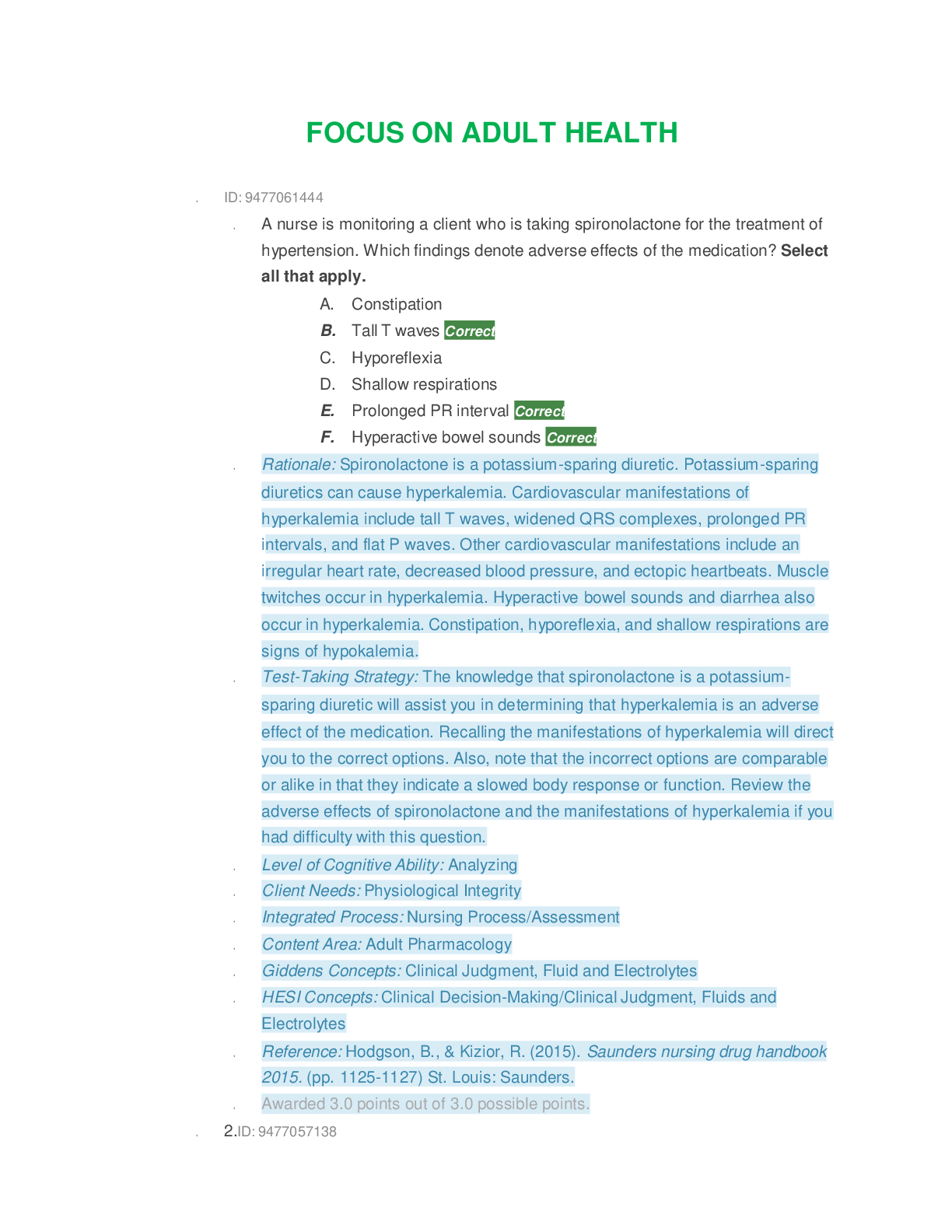Health Care > EXAM > FUNDAMENTALS OF RESPIRATORY CARE - HISTORY OF RESPIRATORY CARE QUESTIONS WITH ANSWERS AND RATIONALES (All)
FUNDAMENTALS OF RESPIRATORY CARE - HISTORY OF RESPIRATORY CARE QUESTIONS WITH ANSWERS AND RATIONALES 2024
Document Content and Description Below
FUNDAMENTALS OF RESPIRATORY CARE - HISTORY OF RESPIRATORY CARE QUESTIONS WITH ANSWERS AND RATIONALES 2024 MULTIPLE CHOICE 1. Which of the following is NOT an expected role of a respiratory thera... pist? a. promoting lung health and wellness b. providing patient education c. assessing the patient’s cardiopulmonary health status d. selling oxygen therapy devices to patients ANS: D Respiratory care includes the assessment, treatment, management, control, diagnostic evaluation, education, and care of patients with deficiencies and abnormalities of the cardiopulmonary system. Respiratory care is increasingly involved in the prevention of respiratory disease, the management of patients with chronic disease, and promotion of health and wellness. 2. Where are the majority of respiratory therapists employed? a. skilled nursing facilities b. diagnostic laboratories c. hospitals or acute care settings d. outpatient physician offices ANS: C About 75% of all respiratory therapists work in hospitals or other acute care settings. 3. Who is considered to be the “father of medicine”? a. Hippocrates b. Galen c. Erasistratus d. Aristotle ANS: A The foundation of modern Western medicine was laid in ancient Greece with the development of the Hippocratic Corpus. This collection of ancient medical writings is attributed to the “father of medicine,” Hippocrates, a Greek physician who lived during the fifth and fourth centuries BC. 4. In 1662, a chemist published a book that described the relationship between gas, volume, and pressure. What was the chemist’s name? a. Sir Isaac Newton b. Robert Boyle c. Anthony van Leeuwenhoek d. Nicolaus Copernicus ANS: B The chemist, Robert Boyle, published what is now known as “Boyle’s law,” governing the relationship between gas volume and pressure. REF: p. 7 5. Who discovered oxygen in 1774 and described it as “dephlogisticated air”? a. Robert Boyle b. Jacque Charles c. Thomas Beddoes d. Joseph Priestley ANS: D In 1774, Joseph Priestley described his discovery of oxygen, which he called “dephlogisticated air.” 6. Who is credited with first describing the law of partial pressures for a gas mixture? a. John Dalton b. Joseph Prestley c. Jacque Charles d. Thomas Young ANS: A John Dalton described his law of partial pressures for a gas mixture in 1801 and his atomic theory in 1808. 7. Who was the first scientist in 1865 to suggest that many diseases were caused by microorganisms? a. Thomas Young b. Louis Pasteur c. Henry Graham d. Robert Koch ANS: B [Show More]
Last updated: 3 months ago
Preview 1 out of 9 pages
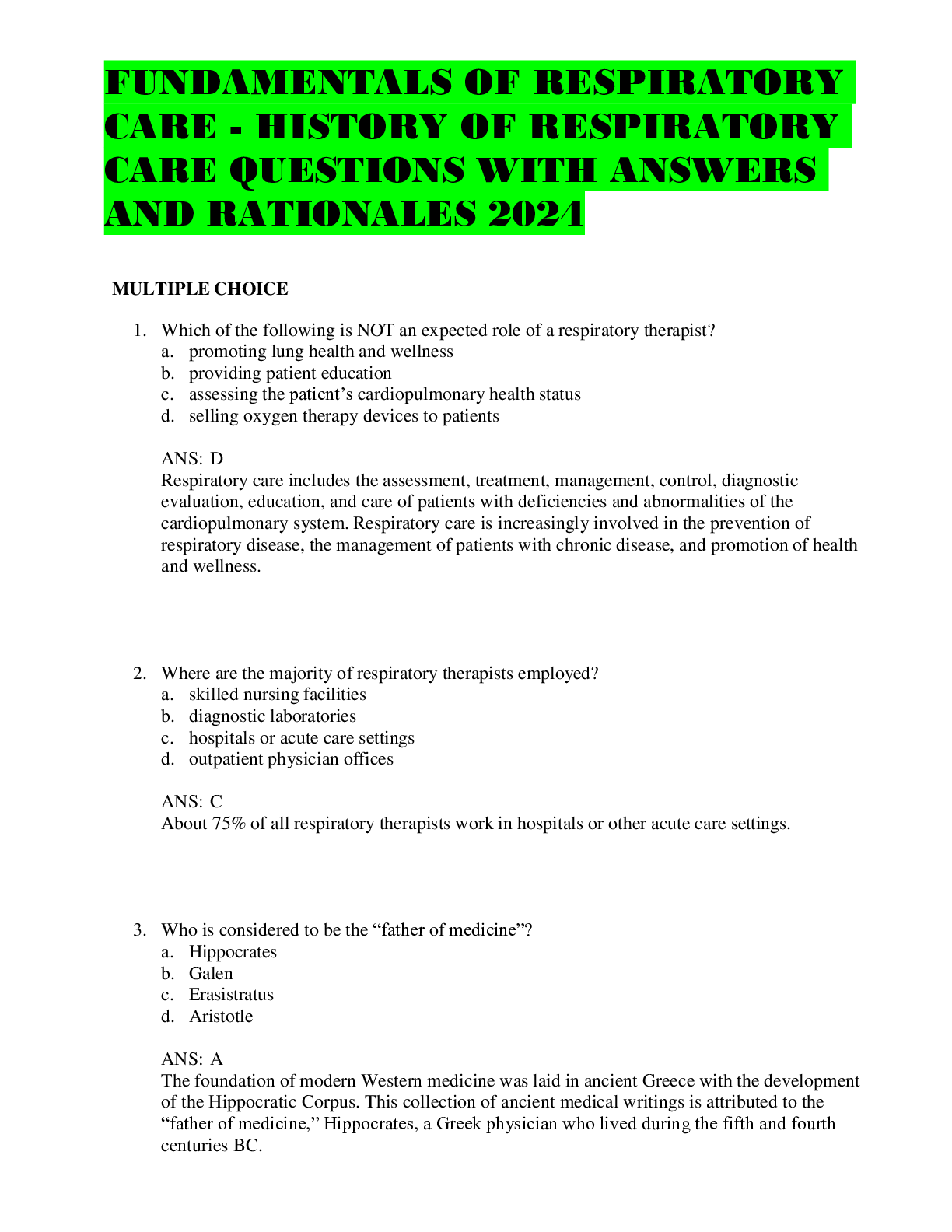
Buy this document to get the full access instantly
Instant Download Access after purchase
Add to cartInstant download
We Accept:

Reviews( 0 )
$18.00
Document information
Connected school, study & course
About the document
Uploaded On
Mar 14, 2024
Number of pages
9
Written in
Additional information
This document has been written for:
Uploaded
Mar 14, 2024
Downloads
0
Views
9

